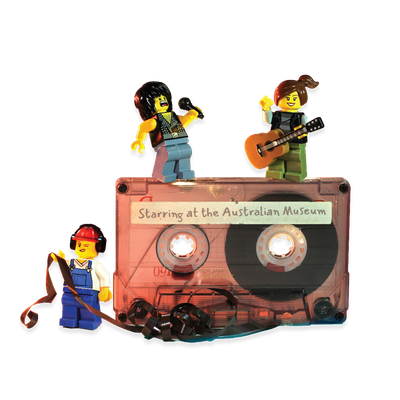Your search returned 2817 results
By Page Type
By Tag
- fish (966)
- blog (696)
- fishes of sydney harbour (401)
- First Nations (297)
- Blog (236)
- AMRI (169)
- archives (164)
- Eureka Prizes (145)
- Aboriginal and Torres Strait Islander (135)
- insect (126)
- Ichthyology (124)
- geoscience (109)
- minerals (102)
- climate change (98)
- podcast (94)
- Fish (91)
- Anthropology (89)
- International collections (80)
- Minerals Gallery (78)
- wildlife of sydney (78)
- Labridae (77)
- frog (73)
- gemstone (70)
- photography (65)
- history (63)
- Mollusca (60)
- gem (59)
- staff (59)
- Birds (56)
- Gems (56)
- Indonesia (56)
- education (55)
- shark (55)
- AMplify (54)
- people (53)
- earth sciences (50)
- past exhibitions (50)
- exhibition (49)
- Gobiidae (48)
- sustainability (46)
- Pomacentridae (45)
- Serranidae (44)
- lifelong learning (42)
- science (42)
- Earth and Environmental Science (41)
- Syngnathidae (41)
- Ancient Egypt (40)
- Bali (40)
- bird (40)
- dangerous australians (40)
-
Pair of applique lamak E097503 & E097504
https://australian.museum/learn/cultures/world-cultural-collections/indonesia/pair-applique-lamak/These long, rectangular cloths ‘lamak’ are designed to drape vertically down the front of a temple shrine or altar, with the top section folded over or attached to the shelf of the shrine as an underlay for offerings.
-
Ritual silk cloth (kain cepuk) E097448
https://australian.museum/learn/cultures/world-cultural-collections/indonesia/ritual-silk-cloth/This textile belongs to a category of ritual cloths known as cepuk and are made by a method of patterning known as weft-ikat ‘endek’ which involves dyeing the weft threads with a pattern before the textile itself is woven.
-
Ceremonial textile (geringsing) E097472
https://australian.museum/learn/cultures/world-cultural-collections/indonesia/ceremonial-textile/Geringsing cloths are made using the double ikat method, a demanding process requiring both the warp and weft threads to be bound and dyed so that when woven together they match up to form the design.
-
Māori fish hooks
https://australian.museum/learn/cultures/pasifika-collections/fish-hooks/maori/Fishing holds profound significance in Te Ao Māori, the Māori world, as evidenced by its creation story.
-
Egyptian funerary boat model
https://australian.museum/learn/cultures/world-cultural-collections/ancient-egyptian/egyptian-funerary-boat/This Egyptian funerary boat model, made of some 30 parts, is the most complex object in our Egyptian Collection. Purchased at an auction in 1913 by Ernest J. Wunderlich, a trustee of the Australian Museum, it has no documentation or provenance.
-
Tongan Ngatu: Bark cloth community collaboration and digitisation
https://australian.museum/learn/cultures/cultural-collection-enhancement-project/tongan-ngatu-digitisation/The Australian Museum’s largest object, the Tongan Ngatu (Bark Cloth), was unveiled in full for the first time in 50 years on June 9, 2023 for digitisation.
-
Digitisation of objects for Wansolmoana
https://australian.museum/learn/cultures/cultural-collection-enhancement-project/wansolmoana-digitisation/A case study of the digitisation of objects for Wansolmoana interactive screens
-
Discover more
2025 Australian Geographic Nature Photographer of the Year
Special exhibition
Now open -
Discover more
Unfinished Business
Special exhibition
Opens 1 November -
Discover more
Wansolmoana
Permanent exhibition
Open daily -
Find out more
Burra
Permanent kids learning space
10am - 4.30pm![]()
-
Discover more
Minerals
Permanent exhibition
Open daily![]()




